The house in Matsuyacho is located in a densely developed residential neighborhood of Osaka. Since the client had lived on the site since childhood, the architects began to draw extensively from the discussions with him, as he knew the characteristics of the site intimately.
Following these discussions, we decided we wanted to build a house that would enable him to discover new things within this familiar place.
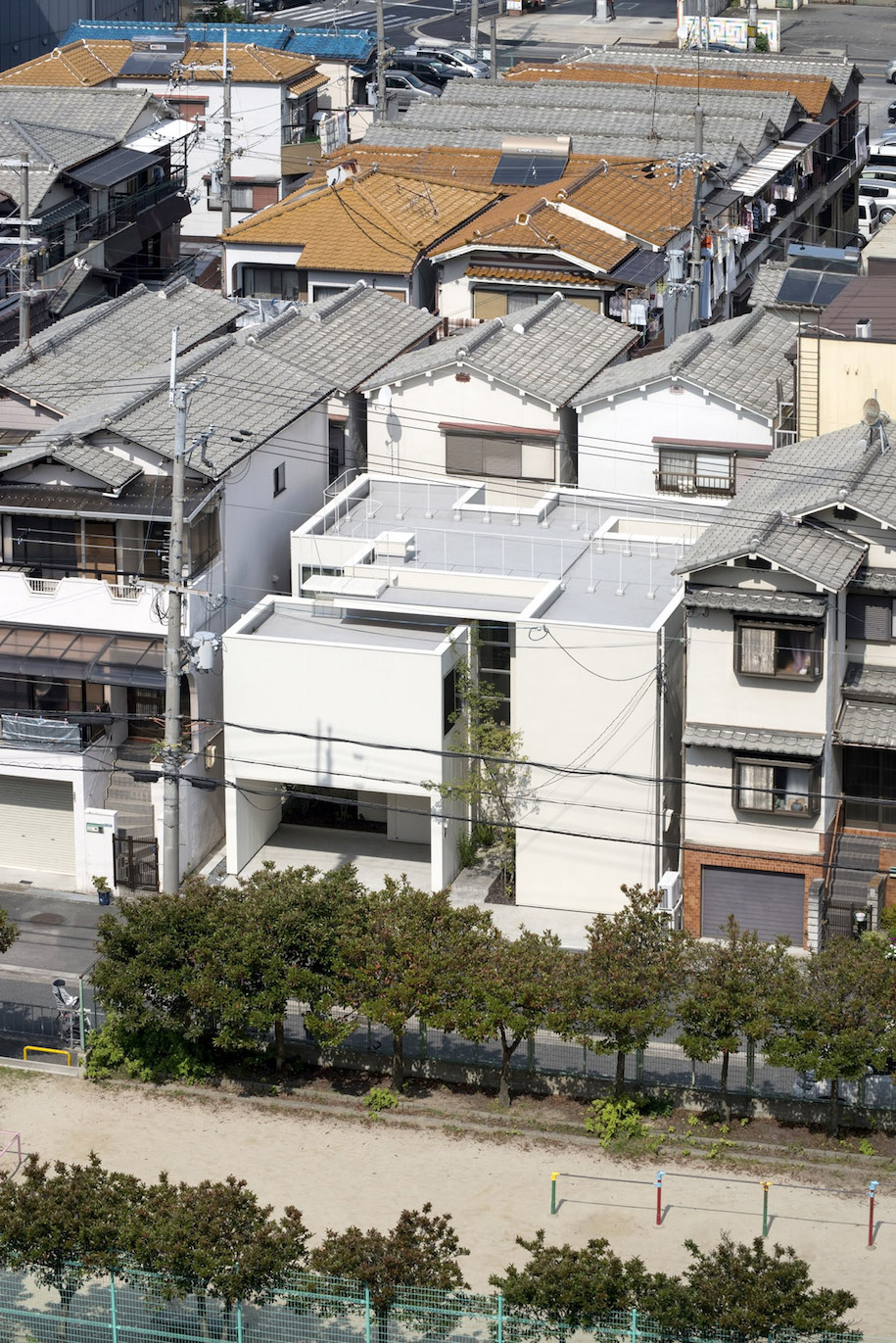
The house is boxed in by neighboring houses. The space between the structures is just wide enough for a person to pass through, and is further obstructed by air conditioning units and water heaters on the exterior walls. Probably due to this environment, the client had struggled for many years with a lack of natural light and problematic dampness in the house.
The design avoided intervening in the layout of the surrounding environment and instead adjusted to it by aligning with them, maintaining intentionally the densely packed atmosphere.
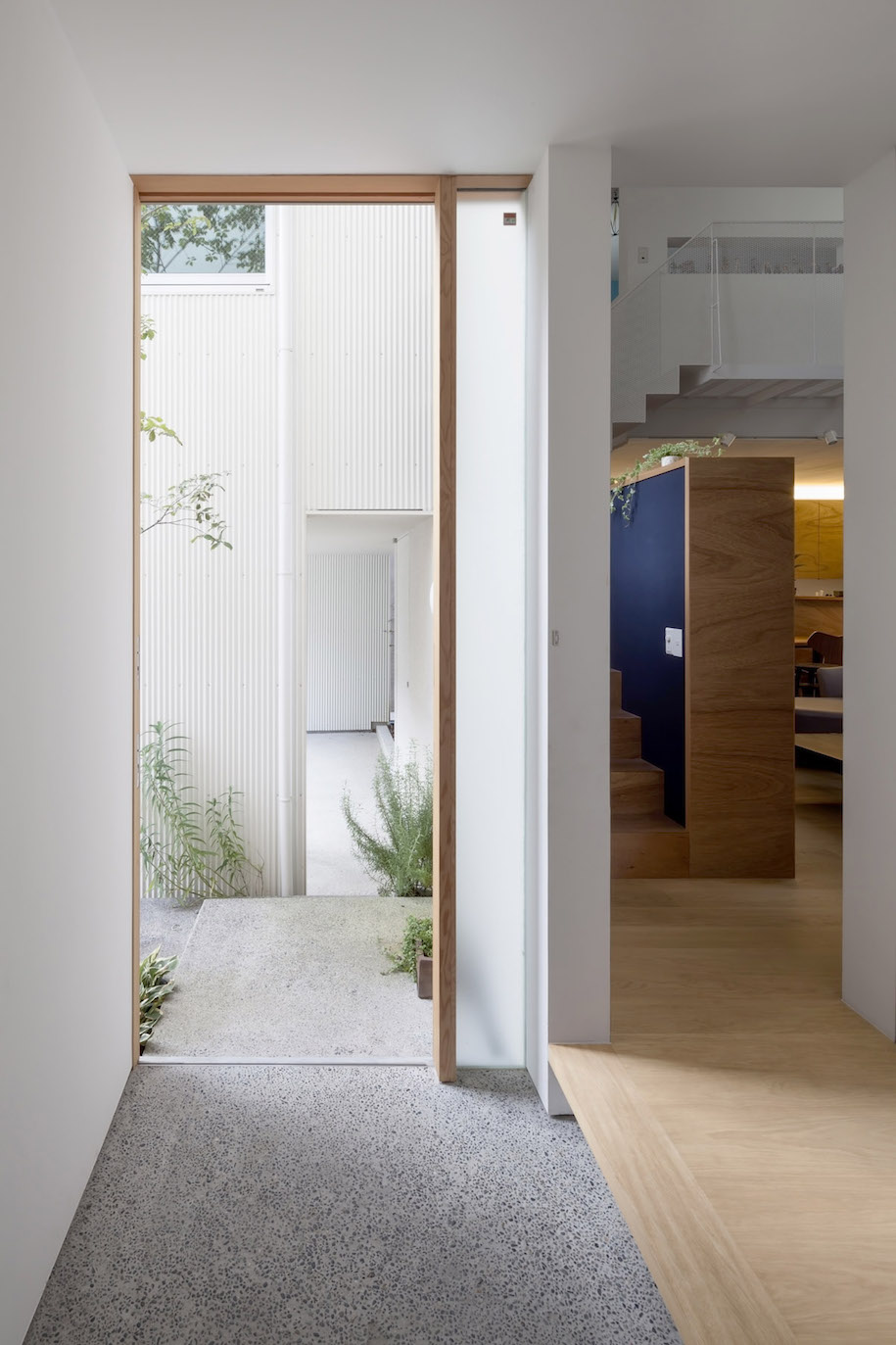
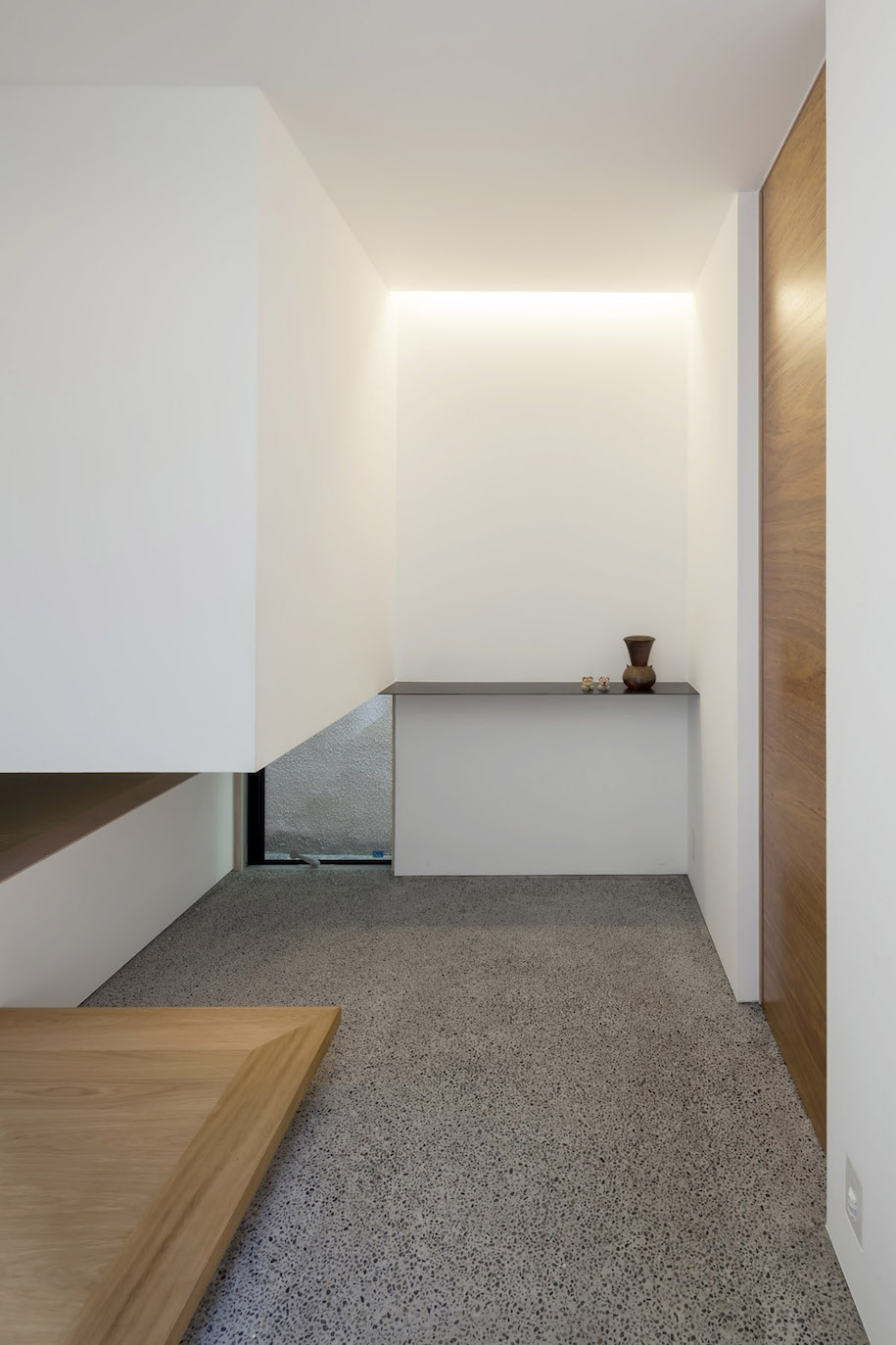
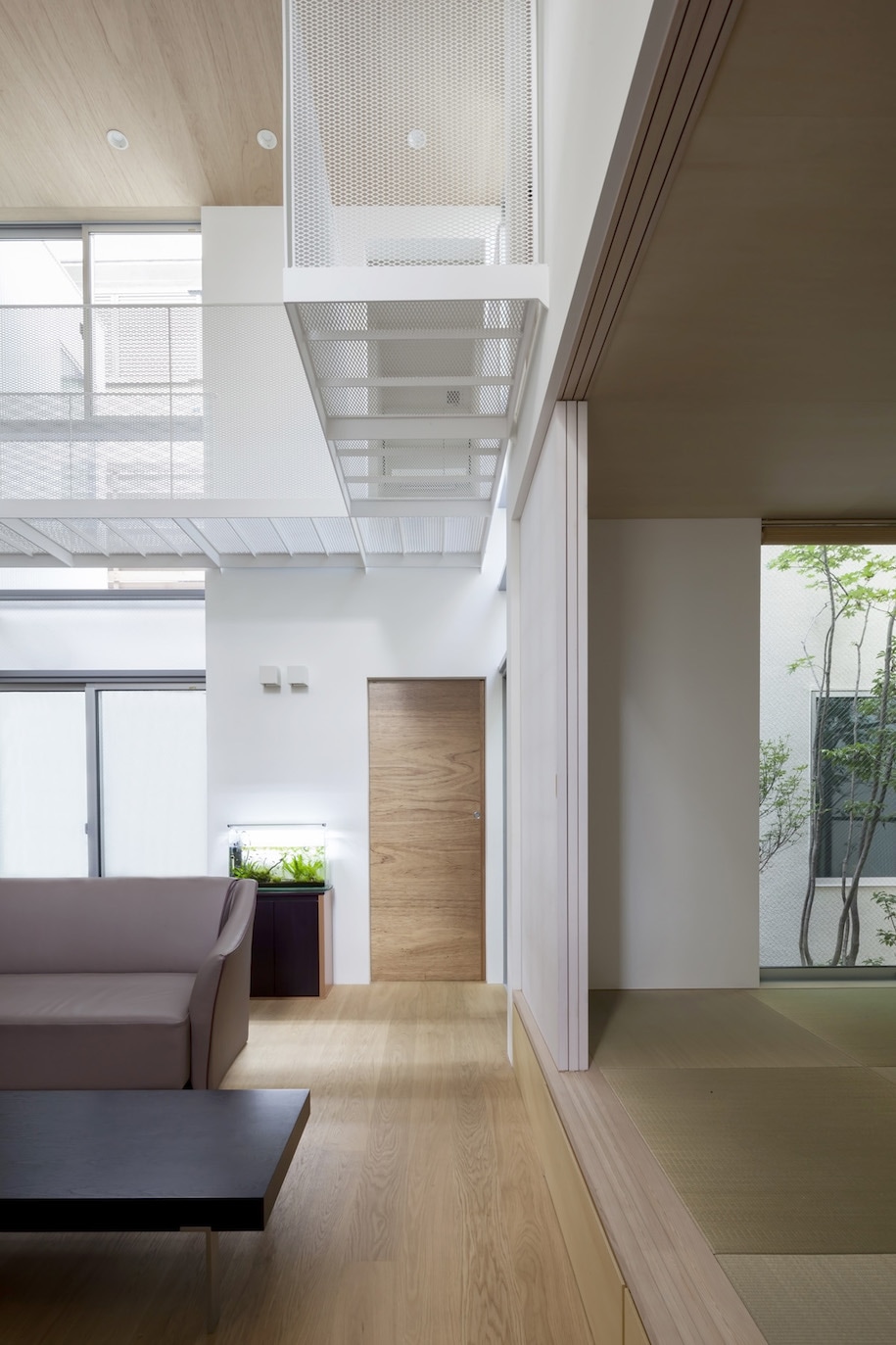
As the architects state, “[t]he solution we arrived at was to build out as close as possible to the neighboring houses, tracing the silhouette of the previous structure, but to also carve out small gardens on three sides. The breezes that pass down the gaps between the houses enter these concave gardens, flowing into the interior along with natural light.”
Accordingly, there is similar hollow on the fourth side of the house (the street side) manifesting this approach. The frontage of this house is about twice as long as that of its neighbors, but because the hollow divides the façade into two sections, it fits in with the scale of the surrounding houses.
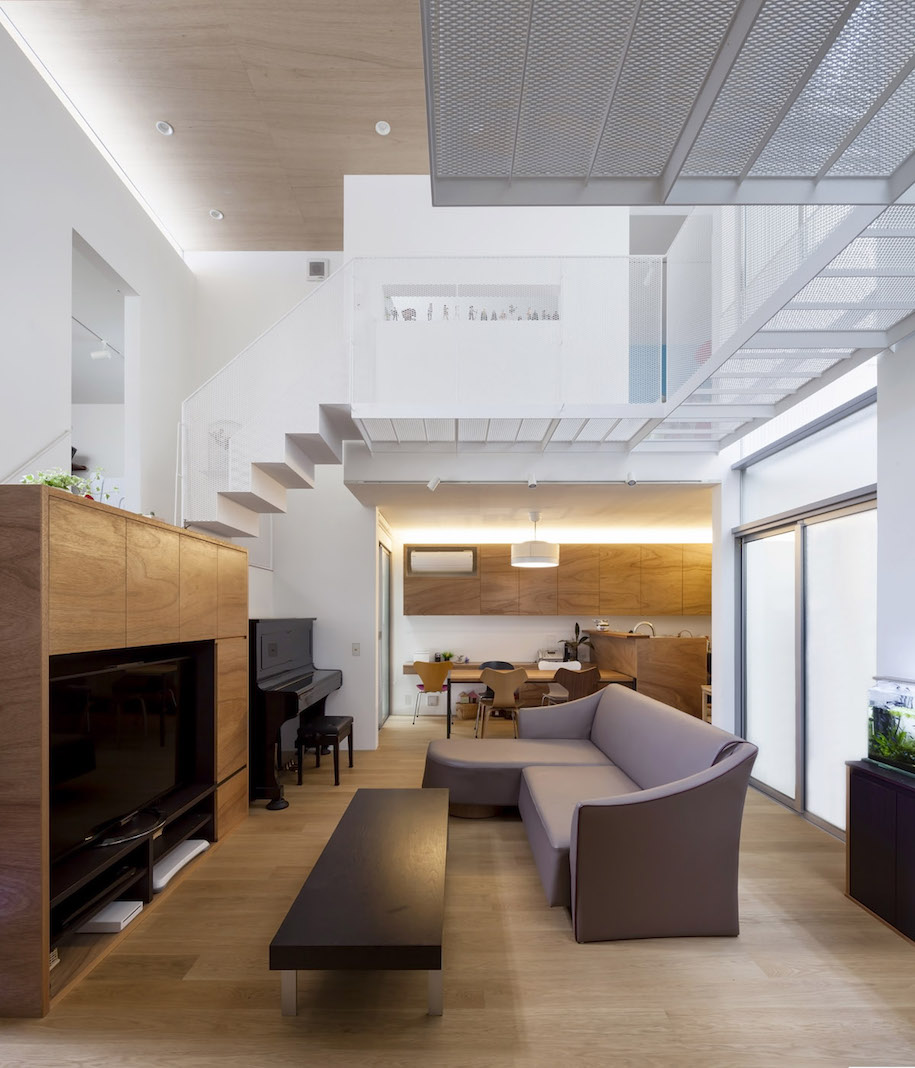
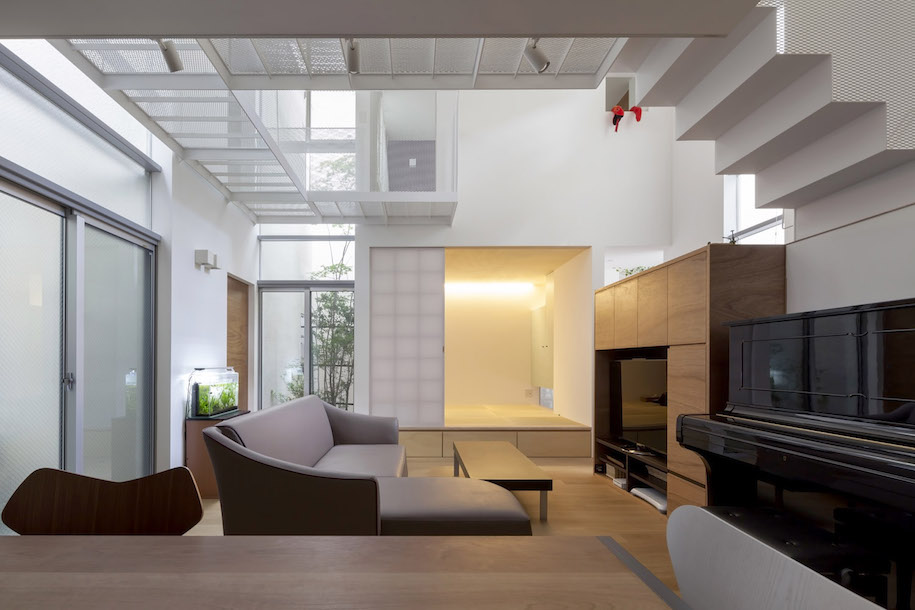
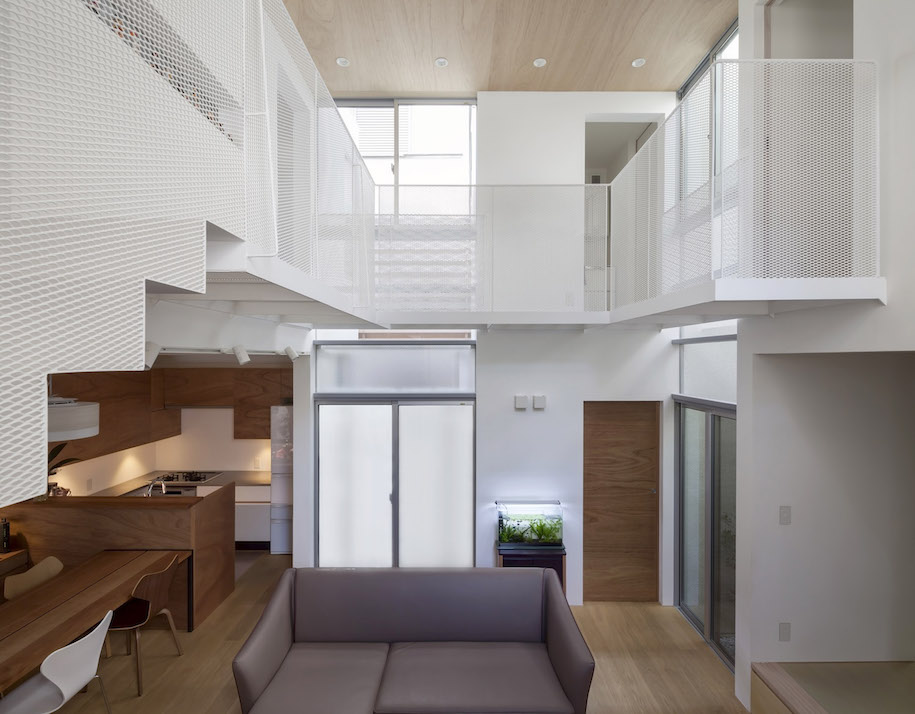
The four indentations divide the interior space into zones that serve different functions. They are connected by a centrally located main room, which has a double-height ceiling and a lacey expanded-metal floor on the upper level. This allows soft light to enter the space from four directions, creating a living environment diametrically opposed to the one which the client previously inhabited. It is our hope that the house will allow the family to enjoy their life in this neighborhood, both now and in future generations.
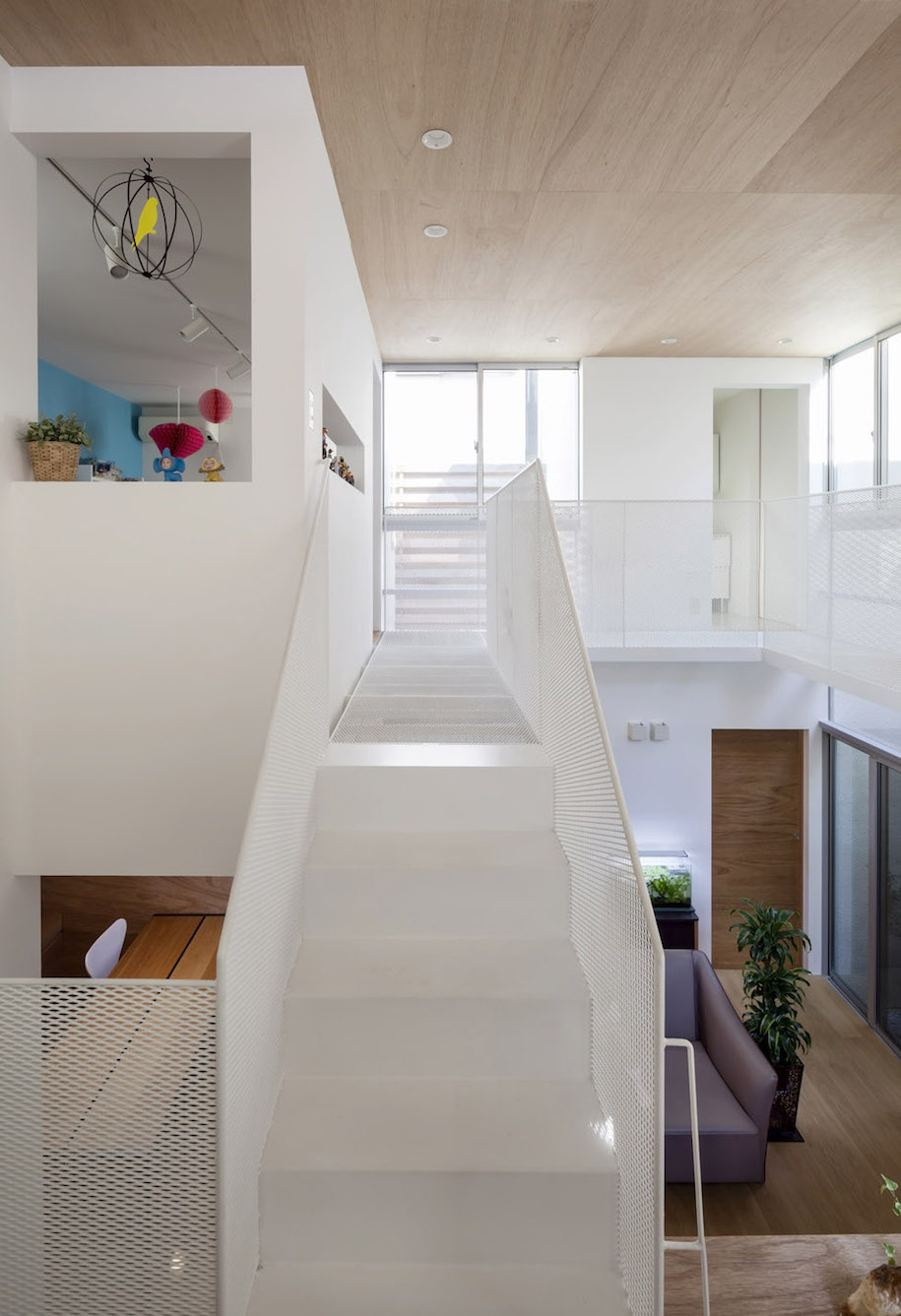
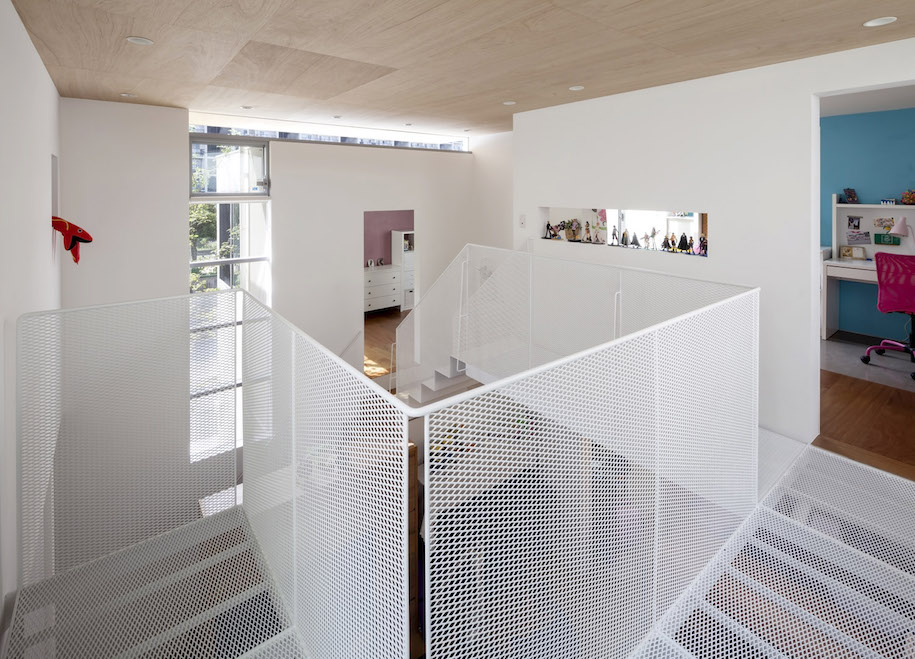
Facts & Credits
location : Neyagawa-shi, Osaka, Japan
architect : Shogo ARATANI Architect & Associates
consultant : S3 Associates inc.
general contractor : IFA inc.
structural system : timber flame
site area : 119.68m2
building area : 71.63m2
total floor area : 120.26m2
year: 2017
photos : Shigeo Ogawa
For more contemporary architecture in Japan, have a look at GLA Chukyo Hall by WARO KISHI + K. ASSOCIATES and Outside in by Takeshi Hosaka architects !
READ ALSO: Το «Human Scale» διερευνά τι συμβαίνει όταν βάζουμε τους ανθρώπους στο κέντρο των εξισώσεών μας | ADFF Athens